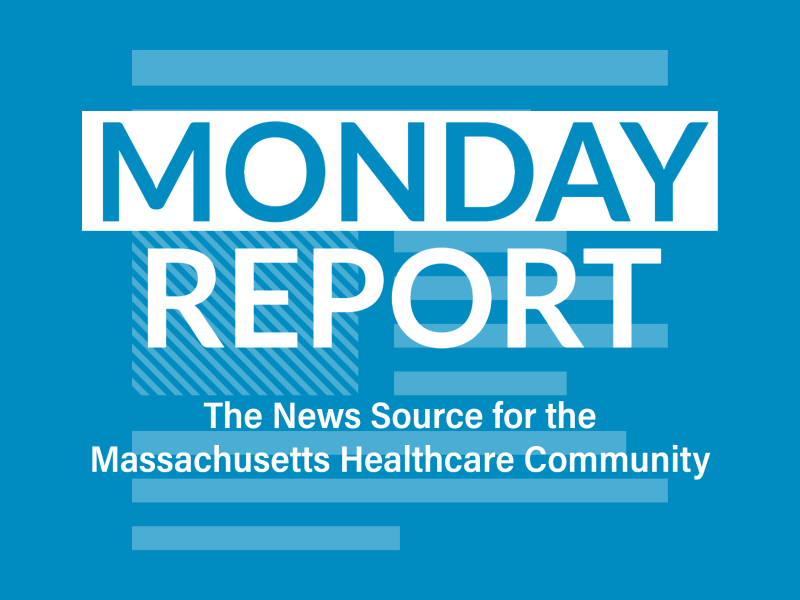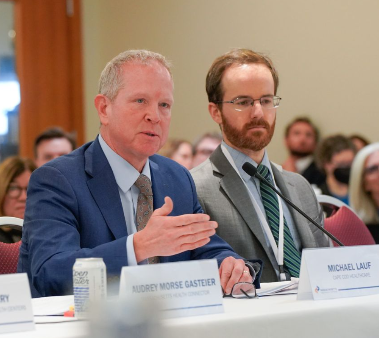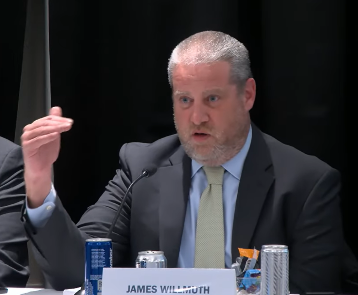Is Benchmark Good, Too Weak, or Irrelevant?

INSIDE THE ISSUE
> HPC Cost Trends Hearing
> * Lauf on Workforce
> * Magic Thinking
> * The Benchmark
> * MHA’s View of the Benchmark
> Government Shutdown Ends
> Vibra Hospital Sold
MONDAY REPORT
Everyone Agrees: System Broken, As Yet Unknown Solutions Needed
At last Wednesday’s Health Policy Commission (HPC) Cost Trends Hearing, participants repeated throughout the course of a full day of testimony some very clear, agreed-upon conclusions about the state of healthcare in Massachusetts, namely: The system is broken. Healthcare providers and insurers are losing money. Recent federal actions (The One Big Beautiful Bill, inaction on premium tax credits, etc.) will lead to as many as 300,000 losing coverage in Massachusetts in coming years. That will raise costs beyond the unsustainable increases now experienced. People are deferring care because it’s too costly, which in turn increases patient acuity, which leads to even higher costs. Employers and individuals can’t put any more funding into the system. And through it all, those with less income and people of color continue to disproportionately bear the burdens of the failing systems in terms of decreased access and poorer outcomes.
The HPC and others presented evidence on these trends from 9 a.m. through 4:30 p.m. Everyone agreed that something needs to be done and that Massachusetts, with its history of innovation and cooperation, is the best place to find solutions.
However, the consensus solutions coming out of the meeting were fairly broad and boiled down to: We have to bring people together to make hard, corrective choices at some point in the near future.
Lauf Outlines Some Positives

Michael Lauf, the president & CEO of Cape Cod Healthcare and the chair of the MHA Board of Trustees, testified on one HPC panel entitled State Strategies to Promote Affordability, Access, and Equity, and he offered a more upbeat message while in no way minimizing the current challenges facing the state’s healthcare system.
“The fact of the matter is we have to change what we do in order to meet the changes that are coming,” he said, “But what will we do?”
Lauf said a key first step is building the workforce “because no matter what we do with technology, no matter how we innovate, we will still need people-to-people contact.” He noted MHA’s recent report that showed Massachusetts hospitals filled more than 5,400 job vacancies for key positions since 2022, reducing their vacancy rate by 28%. The continuing challenge is to make care more accessible by increasing the number of primary care physicians, which, he said, is difficult because the federal government through its reimbursement and payment models favors specialists more than PCPs. A targeted program to make tuition assistance available to PCPs, as well as others on the care team, if they work in underserved communities is a strategy that could result in clear, measurable gains, Lauf said.
All components of the healthcare systems are currently aligned in their broad embrace of telehealth, hospital-at-home, and preventative care, among other proven initiatives that can lower costs and improve access, he said, adding, “we should be at the same table” discussing their implementation.
He also touched on another pain point for providers and patients – administrative burdens.
“This year alone at Cape Cod Healthcare, we will go through 51 surveys,” Lauf said. “Fifty-one surveys annually, bi-annually, monthly, bi-weekly, weekly, daily that we have to report. It’s too much. We can take over a billion dollars out of the system alone by streamlining, by partnering, by making sure that we understand patient outcomes are at the forefront of all we do.”
Moving Beyond “Magic Thinking”
The last panel of the day – How CEOs are Maintaining a Focus on Affordability in a Time of Uncertainty – was perhaps the most lively as it featured the CEO of the largest commercial health insurance company in the state, Sarah Iselin of Blue Cross Blue Shield of Massachusetts (BCBSMA), and Kevin Tabb, M.D., president and CEO of the 14-hospital Beth Israel Lahey Health system. Others on the panel were Doug Howgate, president, Massachusetts Taxpayers Foundation; Zandra Kelley, M.D., president and CEO, Greater Lawrence Family Health Center; and Manny Lopes, president and CEO, Fallon Health.
Tabb urged the healthcare community to move “beyond magical thinking” that he defined as the belief that “we can put less money into the system and provide more care.” But he stressed that because it is impractical to think there will be some new infusion of cash to resolve problems, “we’re going to have to have a tough conversation about what services do we continue to provide and where. And I think the truth is that there is a massive duplication of services throughout the state. And I know for a fact that every time that we attempt to address it as a system and say let’s rationalize this, there’s push back. And I understand that push back, but I don’t know any other way of dealing with the larger issue.”
HPC Chair Deborah Devaux said she understood Tabb’s point, noting that potential cuts in service or attempts to reduce duplications of services not only results in pushback from providers but from entire communities fearful of seeing their access to services reduced.
Meet the Benchmark? Revise the Benchmark? Scuttle the Benchmark?
One part of the How CEOs are Maintaining a Focus on Affordability panel discussion – namely the use of the state’s healthcare cost growth benchmark, which has been set at 3.6% for more than a decade – was especially revealing.
A solution to the crisis that BCBSMA’s Sarah Iselin offered was to make the state healthcare cost growth benchmark less of “a target” and more of a “forcing function” to check rising healthcare costs.
HPC Commissioner Jamie Willmuth, the senior policy analyst for the Massachusetts Division of 1199 SEIU, questioned Iselin’s interpretation of the benchmark’s purpose, noting that in BCBSMA’s well publicized contract dispute with UMass Memorial Health, the insurer was offering an increase of 3.58% percent, which Willmuth said “is awfully close” to the 3.6% benchmark. (The insurer and UMass agreed on a contract the next day, the details of which have not been disclosed.)

“I guess my concern with that is that the benchmark was never intended to be a cap on the amount of rate reimbursement increase that you give to an individual provider,” Willmuth said, adding that if Blue Cross is “baking in” the benchmark, and using it as a “firm target … of the amount that you reimburse each provider,” then the healthcare system will no longer be addressing provider price variation, or providing additional assistance to disproportionate share/high public payer hospitals. And in doing so, underserved populations would be most affected, he said.
“I think we understand that there are providers that are in different financial shape and that are in different abilities to absorb smaller increases than 3.58%,” he concluded. “And others that maybe need to see more than that. And I think that’s why I’ve heard the HPC say many, many times that the benchmark is not meant to be a cap. It’s meant to be a target and a goal.”
In her response, Iselin repeated what she had said in her introductory statement, namely that BCBSMA is showing cost growth increases of 14% a year, and that the insurer is expected to lose $1 billion from 2024 to 2025. She said that while insurers can’t truly control the severity of patient acuity (which is rising across Massachusetts) “we can influence the unit price.”
“Our intention is not to pay everybody exactly the same rate,” Iselin said, but added that in a letter that the insurer sent to all hospital CEOs, BCBSMA said it is its “intention to have an average price increase that allows us, frankly, the ability to respond to the signal that we have been sent about what is the expectation of this body around how much we can as a community afford for healthcare costs, whether it’s expressed in premiums, whether it’s expressed in total medical expenses.” The bottom line, Iselin said, is that “as the federal government takes money away, we cannot expect employers and consumers to make up the difference. We just can’t. There’s no more money. And that is going to make for increasingly challenging negotiations and contracts between payers and providers.”
In his closing remarks of the meeting after the panel had left, Willmuth returned to the benchmark, saying in the current and past HPC meetings providers have noted that the benchmark seemed arbitrary and was not working for them. He urged HPC staff to revisit the entire concept of the benchmark to assess “how it’s working, whether it’s working, whether it can be tweaked, whether we can make some major changes to it, or whether it’s outlived its usefulness.”
MHA’s Consistent Take on the 3.6% Benchmark
MHA in past testimony and in communications with the administration and legislature has always expressed concern with how the benchmark – 3.6% – seems to be created out of thin air each year.
The state’s 2012 healthcare reform law created a two-step process for determining the state’s healthcare cost benchmark. First, the Executive Office of Administration and Finance and the House and Senate Committees on Ways and Means determine the state’s “Potential Gross State Product” (PGSP) for the following year as part of the state budget consensus revenue process. Unless the HPC recommends an alternative healthcare cost benchmark that the legislature approves, the benchmark is equal to the growth rate of PGSP. Throughout the years, the healthcare cost benchmark has always defaulted to the PGSP, including a five-year period with a statutory requirement for the benchmark to be set at 0.5% below PGSP.
MHA has consistently asked: “Why the repetitive 3.6%?” According to the U.S. Bureau of Economic Analysis, Massachusetts GDP growth has averaged 5.2% for the past 10 years. In seven of those years, the actual state GDP growth has exceeded the PGSP amount – and therefore also the healthcare cost benchmark.
“For the past 10 years, the PGSP factor has not been an accurate representation of economic growth and therefore has not been an appropriate benchmark for healthcare cost growth as intended by the 2012 law that created the HPC and the benchmark,” says MHA’s Senior V.P. of Healthcare Finance and Policy Dan McHale. “If Massachusetts wants to better ensure that healthcare is affordable and accessible while shoring up our healthcare system in preparation of the federal cuts, it will be important that the state’s assessment of healthcare spending be realistic and fair. That assessment begins with PGSP, and we believe that the consistent application of an arbitrary 3.6% factor that was established 13 years ago is not a valid measure of economic growth.”
CR Signed, Government Shutdown Ends
Last Wednesday night, the president signed a continuing resolution (CR) bill to end the 43-day government shutdown. Earlier in the week, the U.S. Senate passed the bill by a 60-40 vote, and on Wednesday the House voted 222-209 to approve it.
Every member of the Massachusetts delegation opposed the CR because it does not address enhanced advanced premium tax credits for Affordable Care Act plans, which remain set to expire at the end of 2025. However, it does contain a number of short-term extensions for key health programs through January 30,2026, and retroactive to the October 1 start of the shutdown, including:
- Medicare telehealth flexibilities;
- Acute Hospital Care at Home program;
- Moratorium on scheduled cuts to the Medicaid Disproportionate Share Hospital program;
- Medicare Dependent Hospital and Low-Volume Hospital programs; and
- The Cybersecurity Information Sharing Act liability protections for providers who share information on cybersecurity threats with the federal government.
The bill also waives the requirement for “PAYGO” sequestration, which would have implemented a 4% cut in Medicare payments starting in 2026, and delays through January 2026 potential cuts to clinical laboratory payments required by the Protecting Access to Medicare Act (PAMA). The delay of the PAMA cuts was a surprise since it was not included in the previous continuing resolution draft. PAMA was enacted in 2014 and is aimed at reforming the Medicare Clinical Laboratory Fee Schedule by establishing market-based rates for clinical laboratory services paid under CLFS. Concerns about the accuracy of the data used has led Congress to delay the implementation of CLFS rate cuts since 2020.
While the CR did not include an extension of the ACA premium tax credits, Senate Majority Leader John Thune (R-S. Dak.) has pledged to allow a vote on an extension proposal by mid-December, and discussions are already underway by both Democrats and Republicans on various extension proposals as well as alternative health initiatives.
The full text of the CR is here.
Vibra Hospital of Western Massachusetts is Sold
The Public Health Council on Wednesday, November 12 voted to transfer the ownership of Vibra Hospital of Western Massachusetts – Central Campus in Leicester, Massachusetts to Everest Hospital, LLC.
The $9 million deal involves the Meadows, a skilled nursing facility located on the same property. According to this document filed with the council, the Vibra hospital will be the first long-term care hospital Everest has run. Therefore it has engaged Whittier Health Network as a consultant for three years.
The hospital is licensed for 47 beds. By purchasing the property, Everest takes complete control of it from Medical Properties Trust, which was the entity that owned the now-bankrupt Steward Health Care properties.
The hospital is currently staffed through the “Vibra Travels” entity, which classifies some staff as “agency’ and some as direct hires. “It is a misnomer that the agency staff employed by Vibra Travels are ‘travelers’ as all are local and live within driving distance to the Hospital,” the document submitted to the council reads. “With the upcoming transfer of ownership, a number of the Vibra Travels staff classified as agency have already shifted to direct employees of the Hospital instead of Vibra Travels.”
Everest added that it has no intent to terminate any staff. “Improving staffing is key to the Applicant’s plans to revitalize the Hospital; however, it is not the only action item,” Everest wrote. “The Applicant plans to improve the Hospital’s reputation and foster local relationships with acute care hospitals to bolster its referrals.”

 Massachusetts Health & Hospital Association
Massachusetts Health & Hospital Association